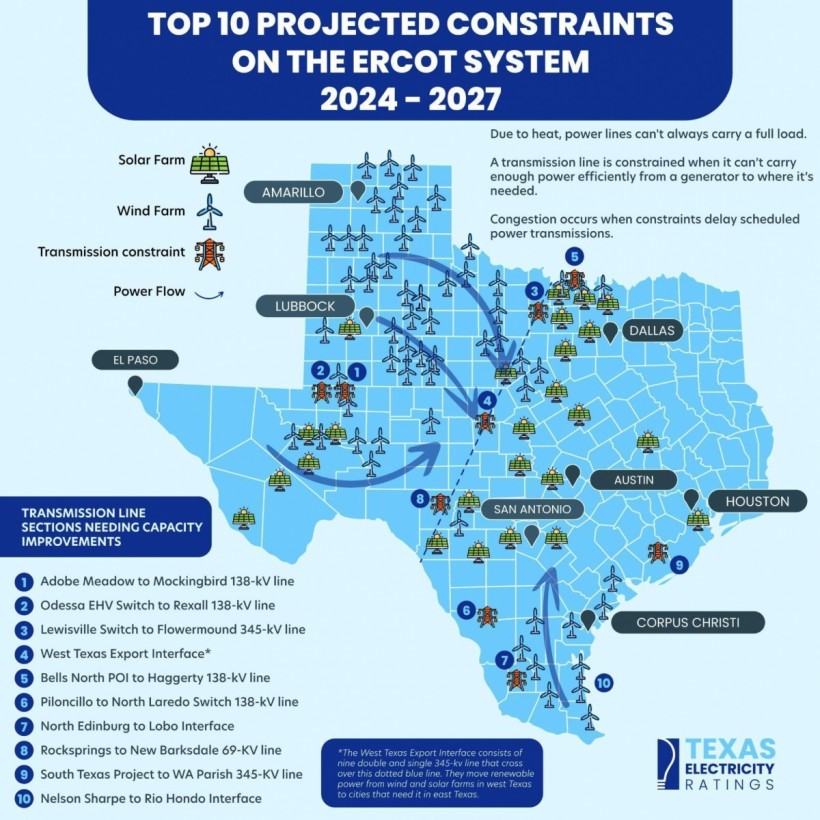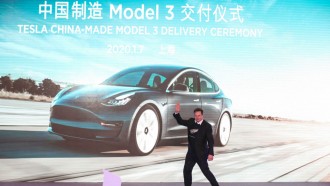Green energy kept the Texas grid reliably humming along last summer. But that ended on Wednesday, September 6. At 7:25 pm, ERCOT's generation reserves fell below 1,750 MW, and it issued an Energy Emergency Alert 2.
Ironically, the emergency started when too much wind energy threatened to overload a transmission line sending power to Dallas. To save the line, ERCOT curtailed the wind farms supplying power because there just wasn't enough transmission capacity to carry it. Unfortunately, the move put the whole grid at risk during a period of high demand.

For the ERCOT control room folks, it was a case of "Damned if you do; damned if you don't." But for Texas energy consumers, the incident highlights problems with future demand. PowerChoiceTexas.org points out that Texas electricity rates depend a lot on where you live. With the Lone Star State facing increasing population and electricity demand, the ERCOT grid needs all the power it can make to keep rates low.
But if there's not enough transmission to carry the power, you won't even be able to turn on a night light.
Connecting Renewables to ERCOT's Grid
With over 52,000 miles of high-voltage transmission lines and substations, ERCOT faces multiple problems. The main one is that there's just not enough wired capacity to connect all the generation projects (both renewable and "dispatchable") waiting in the interconnection queue. Plus, more are in the works. The EIA predicts that combined wind and solar generating capacity in Texas's power market will double by 2035. And while Texans recently passed Proposition 7 to help fund more natural gas power plants, that energy could also be curtailed from the lack of adequate transmission.
Texas Consumers Pay for New Transmission Costs
Electricity customers pay for transmission projects in their monthly bills. But there are benefits. For example, one of the biggest projects in ERCOT was the Competitive Renewable Energy Zones (CREZ) project. Begun in 2005, CREZ strung 2,400 miles of transmission lines to carry 18,500 megawatts of West Texas wind power to major load centers like Houston, Dallas-Fort Worth, Austin, and San Antonio. Completed in 2014, the project cost $7 billion dollars, nearly double the original estimated cost.
In 2019, CREZ costs accounted for roughly 3% of the average customer's bill or about $4.75. Even so, CREZ cut wind curtailment by more than 90%. At the time, ERCOT estimated CREZ saved ratepayers $2 billion a year.
Most transmission projects are now much shorter. For example, the San Antonio South Reliability Project involves building a new 50-mile line and upgrading another 20 miles of existing line. But it's expensive and time-consuming. For 70 miles of power line, this project is slated to cost $329.1 million and will not be ready until 2027.
The US Department of Energy (DOE) estimates that ERCOT will need to increase its transmission capacity by 140% by 2035. As TexasElectricityRatings.com reports, the average Texas home uses more than 1,000 kWh in the summer. With summer peak demand increasing by more than 4% each year, transmission construction costs could substantially increase what consumers pay each month. Isn't there a smarter, more efficient way?
It turns out there is. And it's been around for over a decade.
A Smarter Way to Move Texas Green Energy
A transmission line's enemy is heat. Carrying too much electricity heats them up. More heat cuts the amount of power they can carry...which heats them up more. Hotlines can sag into tree tops or break and then cause blackouts. To cope, ERCOT adopted a fairly flexible system called Ambient-Adjusted Ratings (AARs). The system uses ambient temperature to set how much power transmission lines can carry. Each transmission owner provides ERCOT with temperature tables rated in 5-degree increments for its lines. ERCOT then uses weather forecasts to update line transmission capacity for the day automatically.
While newer Grid Enhancing Technologies (GETs) cannot totally replace the need for additional infrastructure, they can make what's in place work much more efficiently. Plus, GETs can be deployed much faster and often at less cost than building new transmission projects. One highly promising technology is Dynamic Line Rating (DLR). DLR systems continuously monitor and adjust the capacity of transmission lines based on real-time thermal conditions sent from the line itself.
This is not bleeding-edge stuff. In 2014, Dallas-based Oncor demonstrated that DLRs improved its grid efficiency and reliability by improving line capacity. By just increasing transmission capacity by 5% on the study's target lines, Oncor found it could relieve congestion by up to 60%. Furthermore, a 10% increase in capacity relieved all congestion.
When it comes to the whole Texas grid, the benefits get even bigger. A 2022 MIT study ran simulations of the ERCOT grid and found that DLRs could save $776 million in annual congestion rents. Notably, the research showed DLRs could cut curtailment of wind and solar resources by about 1,000 MW per hour.
So, it's possible that smarter transmission might have avoided the September 6 emergency altogether.
Rewire Texas for Green Energy Savings
Maybe green energy curtailments like the September 6 event are one way for ERCOT to keep squeaking by catastrophe. But now, with both states' populations demanding more electricity each year, ERCOT knows it needs to invest in a smarter way to transmit its growing green energy supply to the places that need power.
Twenty years ago, Texas untangled its regulated energy market to bring customer choice, lower prices, and innovative renewable energy to its grid. Now, it's time for Texas to rewire itself to increase reliability and cut customer prices. By implementing grid-enhancing technologies like DLRs, Texas can show it still has the talent, the know-how, and the will to supply cheap, reliable electricity to all consumers without help from outside the ERCOT grid.
* This is a contributed article and this content does not necessarily represent the views of techtimes.com








